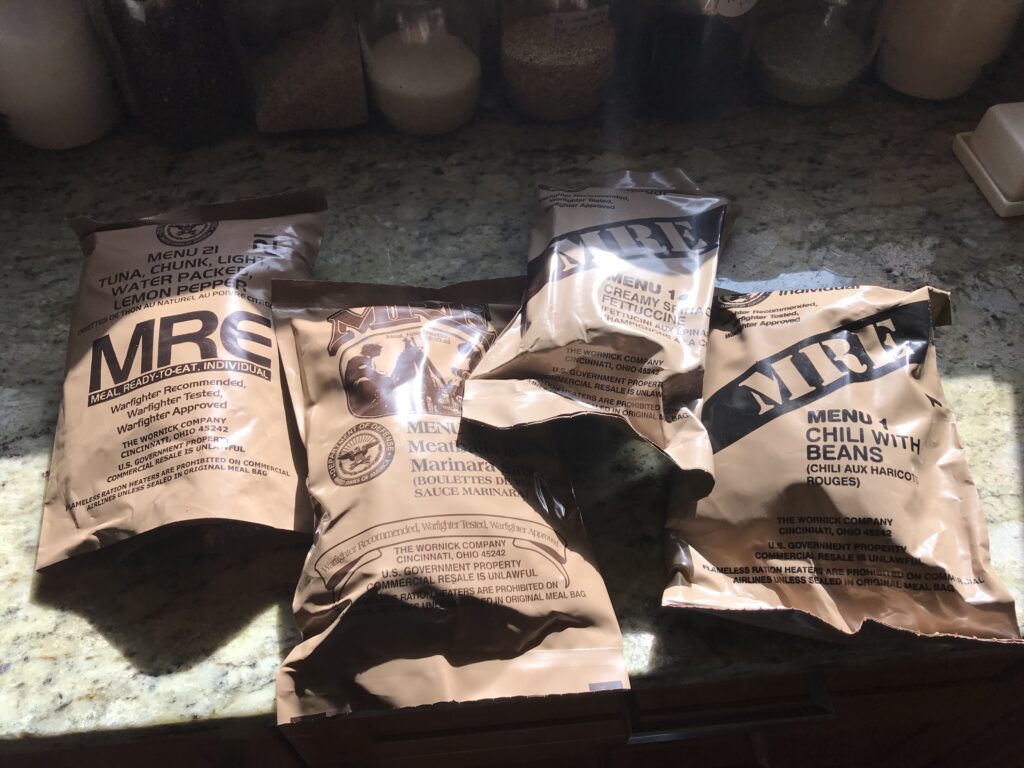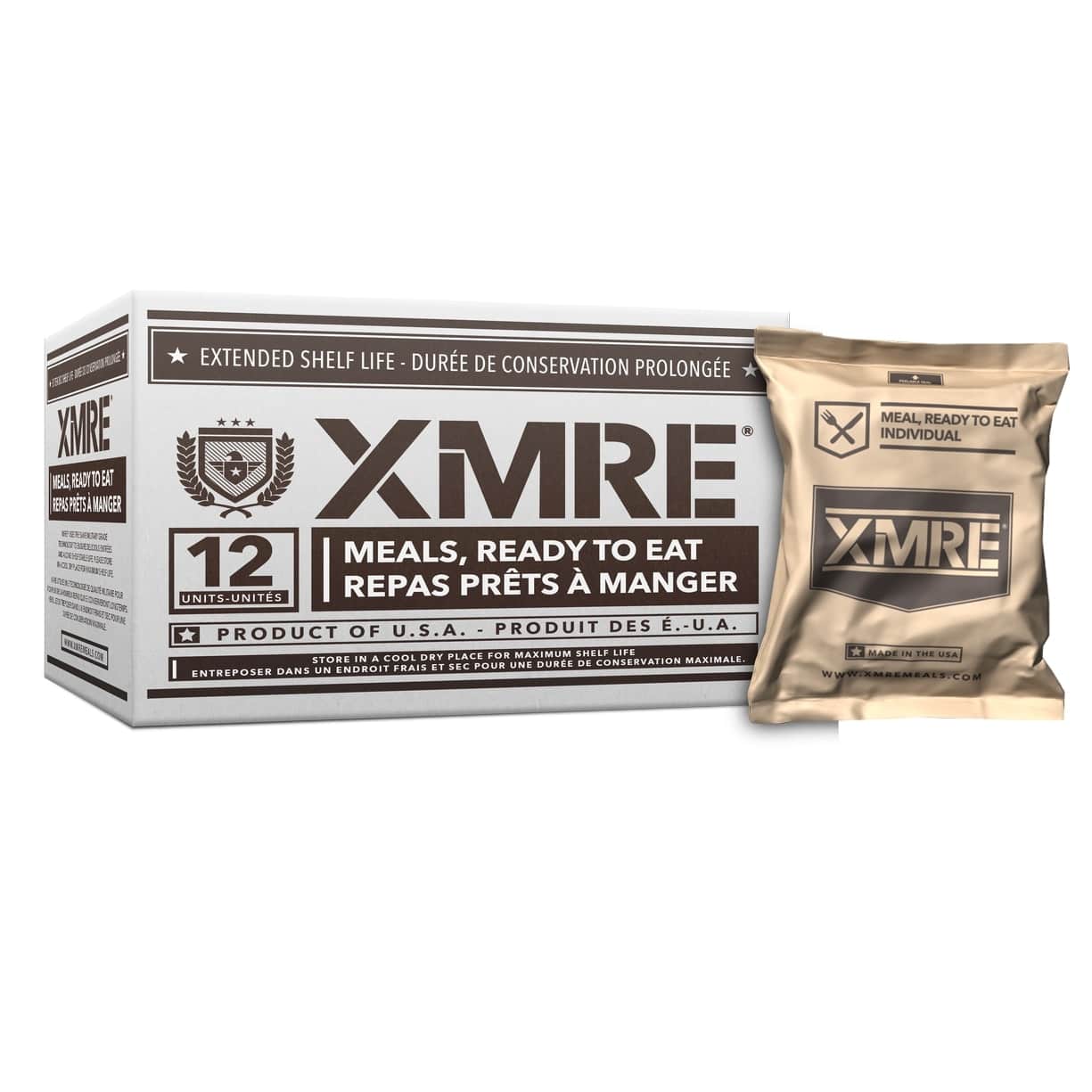What Does Mre Mean - A Meal, Ready-to-Eat (MRE) is a self-contained, individually packaged ration purchased by the United States Department of Defense for its military personnel for use in combat or in the field where other foods are not available. While MREs should be cold, they do not need to be refrigerated. The MRE replaced the canned MCI, or Meal, Combat, Individual rations, in 1981.
Developed by the US Army for Special Forces and Ranger Patrol units in Vietnam. MREs have also been distributed to civilians during natural disasters.
What Does Mre Mean

As of 2010, the term "MRE" in Greek is sometimes used colloquially (especially online) as a more pejorative term for a field ration. The use of the term was popular among YouTube users, especially Stev Andrew Thomas, an American YouTube personality who specializes in food rations from various countries.
Build The Ultimate Mre Meal With The Military's Combat Rations Database
The first U.S. military rations enacted by Congress during the Revolutionary War consisted of enough food to feed a man for a day, primarily beef, beans, and rice.
During the Civil War, the U.S. military moved toward canned goods. Self-contained packs were later issued as a complete portion containing canned meat, bread, coffee, sugar and salt. During World War I, canned meat was replaced with light canned meat (salted or dried) to save weight and allow soldiers to carry their supplies on foot. A number of new field rations were introduced at the start of World War II, including the mountain ration and the jungle ration. However, cost-cutting efforts by U.S. Army officials during the second half of World War II and the Korean War saw heavy canned C rations once again provided to troops regardless of operational or mission.
A pair of flameless portion warmers. The instructions recommend that they rest against "a rock or something."
After repeated experiences of providing ready-to-eat rations to troops since before World War II, Pentagon officials finally realized that providing a nutritionally correct meal in the field was not enough. Military personnel in different terrains and combat situations often required different subcategories of ingredients to keep food tasty for long periods of time. In addition, catering to individual tastes and preferences would encourage service providers to actually consume the entire portion and associated nutrition. Most importantly, the use of specialized forces in extreme areas and the need to carry increasingly heavy field loads on foot on longer missions required significantly lighter options than standard canned wet rations.
Meal Kit Supply Mre 12 Pack
In 1963, the Department of Defense began developing "Meal, Ready to Eat," the ration that would rely on modern food preparation and packaging technology to create a lighter replacement for the canned meal, combat, individual ration. In 1966, this led to the Long Range Patrol or LRP ration, a dehydrated meal kept in a waterproof canvas bag. However, as with the jungle ration, its attractiveness compared to canned wet rations, as well as the cost of stocking and storing a specialized field ration, led to its limited use and repeated attempts to shut it down by commanding officers.
Early MRE prototypes with freeze-dried and dehydrated foods were developed under Drs. Abdul Rahman, who later received the Civil Service Medal for his work.
However, more work was needed to develop a dose that did not require rehydration (no additional preparation time and water required). Further efforts, led by Dr. Rauno A. Lampi, chief of Natick Soldier Research's Food Systems Equipment Division, Development and Engineering Cter, emphasized refining the retort pouch with a wet ration for three to 10 years. shelf life that was easy to ship, field transport, open and consume when needed straight from the package without additional heat or water. The resulting MRE went into a special edition from 1981 and a standard edition in 1986, with a limited run of twelve trees.

The MRE has been in constant development since its introduction. In 1990, the Flameless Ration Heater (FRH), a water-active pyrogen that emits heat, allowed field service personnel to enjoy a hot meal. In a number of field tests and surveys, service workers asked for more tree options and larger portion sizes. In 1994, advertising-style graphics (graphics) were added to make the packaging more user-friendly and attractive, while biodegradable materials were introduced for non-edible items, such as spoons and napkins. The number of main dishes expanded to 16 in 1996 (including vegetarian dishes), 20 in 1997 and 24 in 1998. Today the program includes 24 trees and more than 150 more.
Are Mre Meals Irradiated?
The variety allowed service providers to trade with them to find something tasty across cultures and geographic regions.
The dose originally came in a dark brown outer bag from 1981 to 1995, as it was designed for use in the temperate forests and plains of Central Europe. It was replaced in 1996 by a brown outer bag more suitable for use in the deserts of the Middle East. In 2000, a bean burrito was offered as a main dish.
In 2006, "Beverage Pouches" were introduced to MREs as service providers have started pushing liquid packaging over canteens, making them colored by using the canteen cups (shaped to fit a canteen lunch bag) to mix powdered drinks. In addition to having gauges to indicate liquid levels for accurate readings, they can be sealed and placed in the flameless heater.
In sequential order, MREs have been developed using the Dietary Intake Guidelines established by the Institute of Medicine (IOM). The well-known IOM servicemen (who were classified as highly active between the ages of 18 and 30) typically burn about 4,200 calories (kcal) per day, but planned to only consume about 2,400 calories per day during combat, a negative energy balance. This imbalance occurs when service members do not consume the full portions of their rations.
You Can Actually Buy A 50 Pack Of Mre Toilet Paper Online
While the distribution of foods and macronutrients has been adjusted to increase the number of kilocalories per MRE, more studies show that many providers still fall short of current daily intake standards, often substituting and discarding portions of the serving.
Scientists continue to study the habits and eating habits of service agents, making continuous changes that encourage service agents to eat the tire meal and thus get its full nutritional value.
In addition, the military has been experimenting with new prototype assault rations such as First Strike Ration and HOOAH! A bar designed with elite or special forces in mind. They are lighter than a typical MRE, require no preparation, and allow service members to eat them on the go.

In July 2009, 6,300 shake packs of various flavors were recalled due to evidence of salmonella contamination.
Amazon.com: Mre Z Ration (zombie Mre) Custom Meals Ready To Eat! (menu I
They are estimated to be eaten for up to 21 days (assuming transport units can provide fresh food rations for that) and a minimum of three years (depending on storage conditions).
The packaging requirements are strict. MREs must be able to withstand 380-meter (1,250-foot) parachute jumps and 30-meter (98-foot) parachute jumps. The package must be stable for a minimum of three and a half years at 27°C (81°F), nine months at 38°C (100°F), and a short period from -51°C (-60°F) to 49° C (120 ° F) must be sustainable. New packaging is being researched to better meet these requirements, including the use of zein to replace the film, which is easy to insert, conducts and reflects heat (which can reveal the status of a customer service representative).
Due to past unauthorized sales to civilians, the Department of Defense requires that "US Government Property, Commercial Resale Illegal" be printed on every box of MRE.
The warning is only for service providers, as there is no law prohibiting the resale of MREs to citizens.
How Does An Mre Heater Work?: A Step By Step Guide
Auction sites such as eBay have continued to allow auctions of MREs because the Department of Defense has been unable to show them rules or laws that specifically prohibit this practice. According to an eBay spokesperson, "We will not prevent them from being sold on the site until a law is passed that says you can't sell these items."
So while MREs are not contraband, the acquisition and sale of MREs by soldiers for personal gain is illegal under Section 108.
As a result, MRE products offered for sale outside authorized dealers often fall into the gray market where the question of how they came into the hands of citizens (via theft/legal means) and/or the quality may be unknown.

A 2006 investigation by the US Accountability Bureau found many cases where eBay sellers may have obtained improper MREs and sold them to the public for personal gain.
Mre For Sale
Since military MREs are purchased at taxpayer expense, they are intended for consumption by individuals of authorized organizations and activities. Consequently, "when military MREs are sold to the public on eBay, they are clearly not getting the deposits they want and
Halsey taylor bottle filling station, taylor weather station, taylor station surgical center jobs, taylor weather station manual, brod and taylor fermentation station, orthopedic one taylor station road, surgical scrub station, taylor station, taylor weather station 1736 manual, taylor wireless weather station, orthopedic one taylor station, taylor made surgical caps
Post A Comment:
0 comments so far,add yours